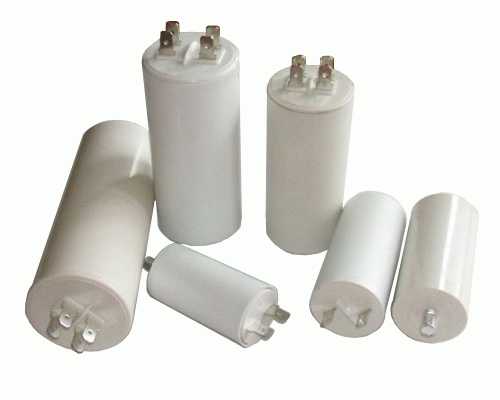Ceramic Capacitors are capacitors which use ceramic as the dielectric. Ceramic capacitors are one of the earliest type of capacitors. Today, Ceramic capacitors are the most widely produced type of capacitors.

Ceramic capacitors are not polarized which means that they can be used in AC applications. They can be connected in any polarity in DC applications. They have excellent frequency characteristics
and have low parasitic effects (unwanted resistance and inductance). Ceramic Capacitors usually have small capacitance values of the order of nano or microfarads.
Ceramic capacitors are of two major types, the Multi Layer ceramic capacitor (MLCC) and the ceramic disc capacitor.
On the basis of precision and tolerance, ceramic capacitors can be classified into Class 1 and Class 2 capacitors.
Class 1 capacitors are used in situations where high stability and low losses are desired. These capacitors have high accuracy.
Class 2 capacitors are used in applications where moderate sensitivity and accuracy will be sufficient. These capacitors have high capacitance per volume and are used in less sensitive applications.



 The DC link is the connection between these two circuits. The DC link usually has a capacitor known as the DC link Capacitor. This capacitor is connected in parallel between the positive and the negative conductors.
The DC link is the connection between these two circuits. The DC link usually has a capacitor known as the DC link Capacitor. This capacitor is connected in parallel between the positive and the negative conductors.  Frequency transducers are devices which generate an analog signal in accordance with the frequency to be measured. They are used in power systems and in electric equipment such as motors and generators to monitor the system frequency.
Frequency transducers are devices which generate an analog signal in accordance with the frequency to be measured. They are used in power systems and in electric equipment such as motors and generators to monitor the system frequency. Y Capacitors are used between a phase and the chassis (ground) of an equipment. Y capacitors are used where the failure of the capacitor will lead to an electric shock if a proper ground connection is absent.
Y Capacitors are used between a phase and the chassis (ground) of an equipment. Y capacitors are used where the failure of the capacitor will lead to an electric shock if a proper ground connection is absent. 

 Arc Suit is a protective equipment worn by personnel working in places where there is a risk of an arc flash. Personnel working with HV equipment in switchyards and in HV panel rooms need to be properly protected against Arc Flash (See Article on Arc Flash).
Arc Suit is a protective equipment worn by personnel working in places where there is a risk of an arc flash. Personnel working with HV equipment in switchyards and in HV panel rooms need to be properly protected against Arc Flash (See Article on Arc Flash).  A coupling capacitor is a capacitor which is connected in series to a circuit. The function of the coupling capacitor is to block DC and permit only AC to pass through. Typical examples would be an audio circuit which requires only the amplified speech signal which is DC to be passed through.
A coupling capacitor is a capacitor which is connected in series to a circuit. The function of the coupling capacitor is to block DC and permit only AC to pass through. Typical examples would be an audio circuit which requires only the amplified speech signal which is DC to be passed through.